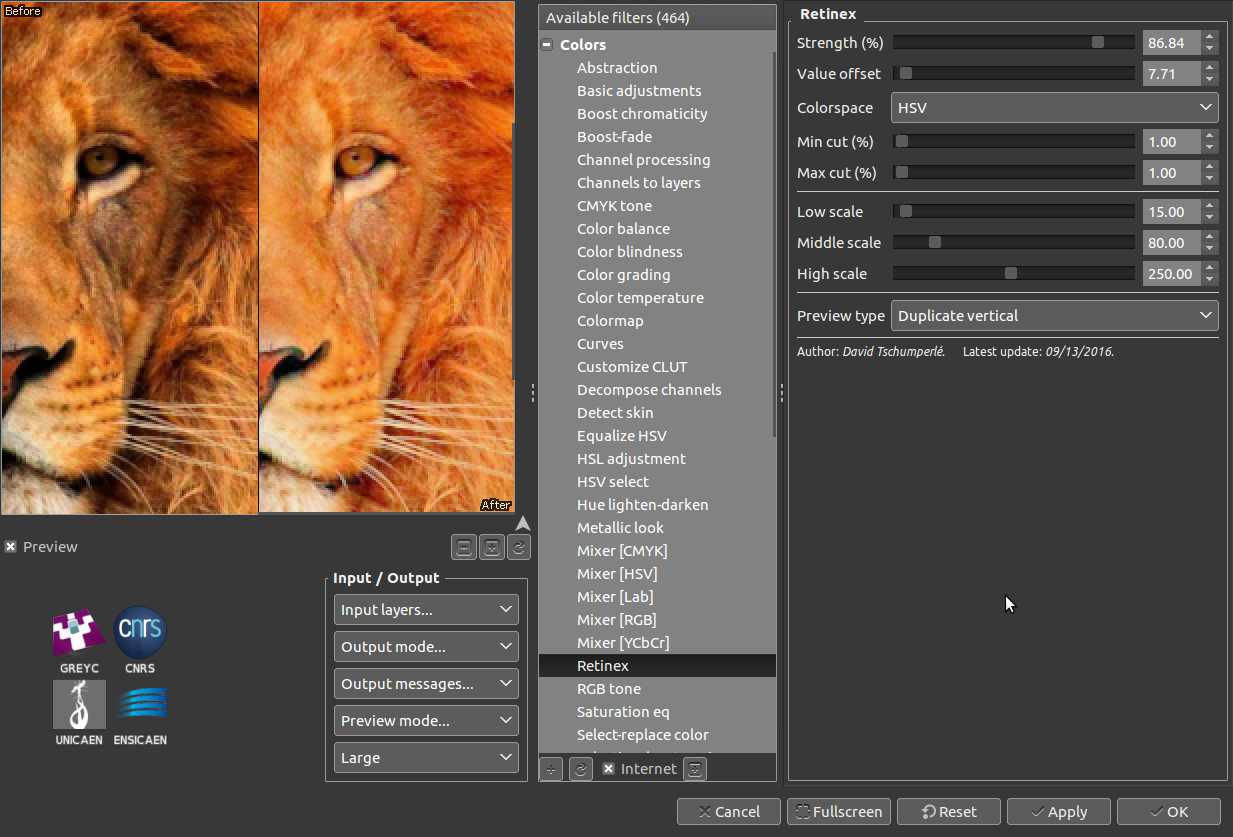

It’s what’s known as “destructive” editing since it “destroys” the previous state of the film as it goes on. What do I mean? In the physical film, if you make an edit, it can be hard, or even impossible, to take it back. One of the best parts of digital photography is being able to edit images without destroying them. Photoflow has enough essential tools to get the most editing jobs done and is quickly ramping up the list of supported features.Īfter spending some time with Photoflow, you’ll be wondering why digital photography didn’t make destructive editing a thing of the past from the start.
PHOTOFLOW GIMP SOFTWARE
The software is still in early access, but I’m impressed with what it’s capable of at this stage of its design. Photoflow is an image editing software that makes the first consolidated attempt at making destructive editing a thing of the past. We’ve all lost photos of the editing process. Let’s be honest with ourselves for a second.

friendly user-interface to develop new tools and images filters as external plugins. standard photo editing tools support sharpening, cropping, resizing, curves, blurring, levels, colorspace conversions, brightness-contrast control, etc. re-ordering of existing layers via drag&drop support for color-managed workflow: user-defined input, work and output profiles, soft-proofing, etc. ability to load and edit images of arbitrary size, thanks to the underlying rendering engine based on the VIPS library architecture based on Plugins: implement quickly new tools as separate modules that load at runtime

8-bit and 16-bits support, including 32-bits and 64-bits floating point precision, selectable at runtime and on a per-image basis support for fully non-destructive, layer-based photo editing workflow with realtime preview of the final image color-correction options: black and white conversion, contrast/brightness adjustment, channel inversion, custom tones curves, hue/saturation adjustment, channel inversion, horizontal/vertical/radial gradient. color-managed processing in floating-point support colorspace conversions based on ICC profiles (partly implemented)
PHOTOFLOW GIMP PLUS
support for RAW, JPEG, TIFF plus EXIF data and ICC profiles
PHOTOFLOW GIMP INSTALL
Note: You can find a PhotoFlow tutorial here and the Install instructions (for various OS) here. The program interface has a similar interface with GIMP or Photoshop by organizing the editing into layers, layer groups, and masks. The software is still in a developing stage, allowing you to open an image and apply basic editing filters using non-destructive adjustment layers. It is similar to Darktable or RawTherapee, and it already integrates a large number of filters from GMIC. To run the PhotoFlow plug-in on this image, go to the "Filters" menu and select "Filters -> PhotoFlow.PhotoFlow is a free, open-source non-destructive photo retouching program that provides a complete RAW image editing workflow. The starting point is an existing image opened in GIMP. It is therefore possible for example to adjust the luminance of the image without changing the color components, or to adjust the color saturation in a way that is more natural and pleasing than in RGB. The Lab colorspace (or better CIELab) is an alternative representation of the pixel data that, unlike RGB, separates the luminance information from the color information. One of the possibilities offered by the PhotoFlow GIMP plug-in is to apply non-destructive edits in Lab colorspace to any GIMP layer.
PHOTOFLOW GIMP HOW TO
This screencast explains the details of how to run the GIMP AppImage and briefly introduces the tools that are provided with it. The most simple way to use GIMP in combination with the PhotoFlow plug-in under Linux is to download and run the AppImage package that is hosted on the web site. It means that PhotoFlow can be used directly within GIMP, to open and process RAW images as well as to apply non-destructive editing to any GIMP layer. Since a while PhotoFlow is also available in the form of a GIMP plug-in.


 0 kommentar(er)
0 kommentar(er)
